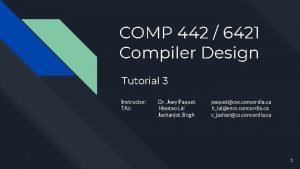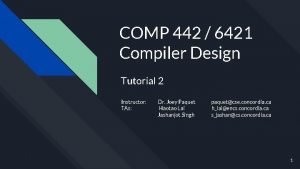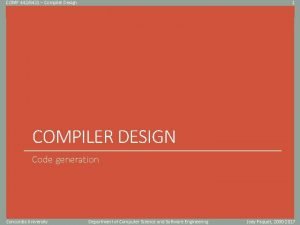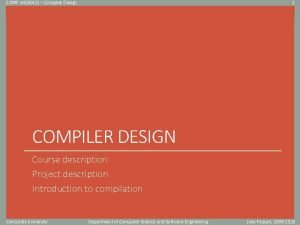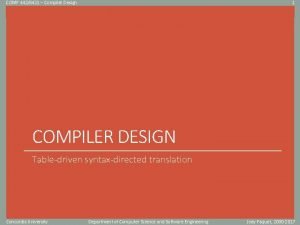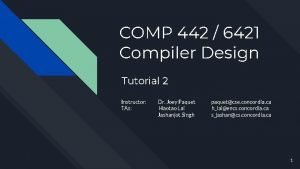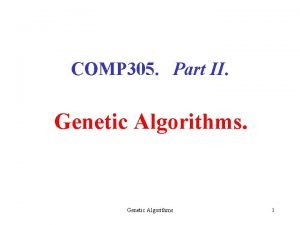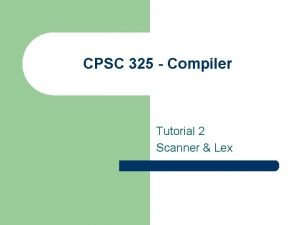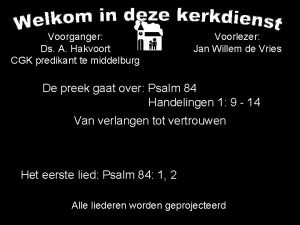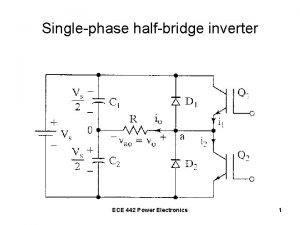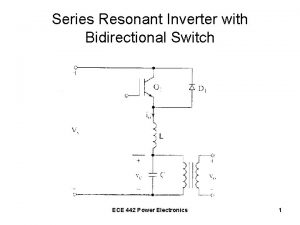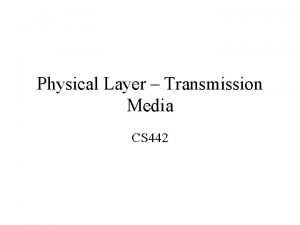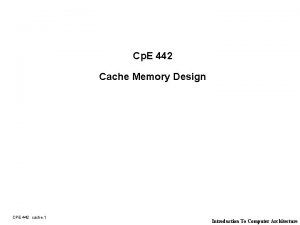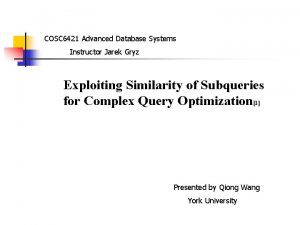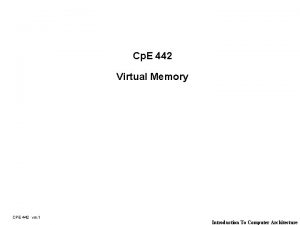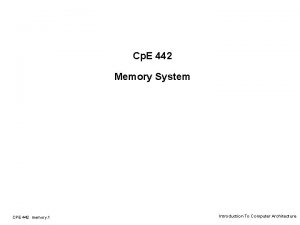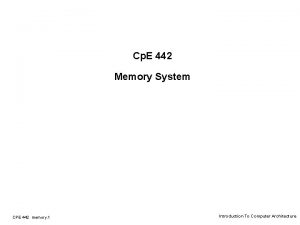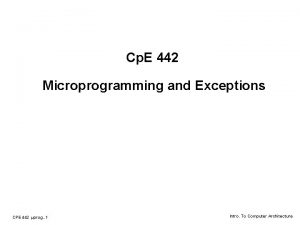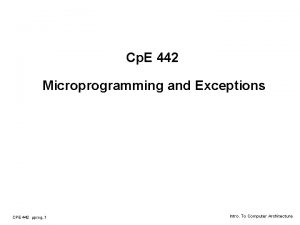COMP 442 6421 Compiler Design Tutorial 3 Instructor














- Slides: 14

COMP 442 / 6421 Compiler Design Tutorial 3 Instructor: TAs: Dr. Joey Paquet Haotao Lai Jashanjot Singh paquet@cse. concordia. ca h_lai@encs. concordia. ca s_jashan@cs. concordia. ca 1

Recall Assignment 2 1. Convert the given CFG to LL(1) grammar a. b. c. 2. Need to use tools to verify your converting procedure Remove the grammar from EBNF to non-EBNF presentation Remove ambiguity and left recursion Implement a LL(1) parser a. b. Recursive descent predictive parsing Table-driven predictive parsing In the following slides, I use step 1 to refer point No. 1, step 2 to refer point No. 2; Question: What is exactly a LL parser and what is the 1 stand for? 2

Three Roadblocks in Assignment 2 Step 1 Quick review 1. 2. 3. Ambiguity Non-deterministic Left recursion For theoritical detail, see the lecture slide set [syntax analysis: introduction]. 3

Ambiguity Grammar: E -> E + E | E * E | id Input string: id * id + id Requirement of the parse tree: A tree that its in order traversal should give the string same as the input string 4

Ambiguity Grammar The solution for ambiguity is rewrite the grammar (that’s exactly what you need to do in assignment 2) to make it unambiguous. In this case, we want to enforce precedence of multiplication over addition. original: E -> E + E | E * E | id Note The modified grammar here is not a LL(1) grammar, the example here just show to remove ambiguity. modified: E -> E’ + E | E’ If you look carefully, you will find it is actually a LL(2) grammar E’ -> id * E’ | id 5

Non-deterministic Grammar 1. 2. backtracking can solve this problem, but it is inefficient; introduce a new non-terminal which we refer as left factoring 6

Left Recursion Garmmar: A -> A α | β By analyze these three possibilities, our goal is to construct something like: A -> βα* But we don’t allow * in the grammar, so we can replace a* with a new non-terminal A’, so we have: A -> βA’ A’ -> αA’ | ε 7

Big Tip When you implement the assignment 2, the online tool we introduced in the tutorial 2 can solve the non-deterministic and left recursion problems! But as theoretical part of the course you should also be able to fix the grammar by hand. 8

Parse Tree - concrete syntax tree (left) abstract syntax tree (right) 9

First Set and Follow Set example 1: S -> A B C D E A -> a | ε B -> b | ε C -> c D -> d | ε E -> e | ε 10

First Set and Follow Set example 2: S -> B b | C d B -> a B | ε C -> c C | ε 11

First Set and Follow Set example 3: S -> A C B | C b B | B a A -> d a | B C B -> g | ε C -> h | ε the note shows what I did in the lab can access: http: //laihaotao. me/ta/w 18_comp 442_fst_flw_set. pdf 12

Tool If you plan to use the table-driven approach, you will need a parse table. Of course you can generate your own parse table, or put a proper grammar into a tool and it will give you the table. We propose an online tool to do that: http: //hackingoff. com/compilers/ll-1 -parser-generator note: you need to use EPSILON to repersent ε 13

Thanks 14
